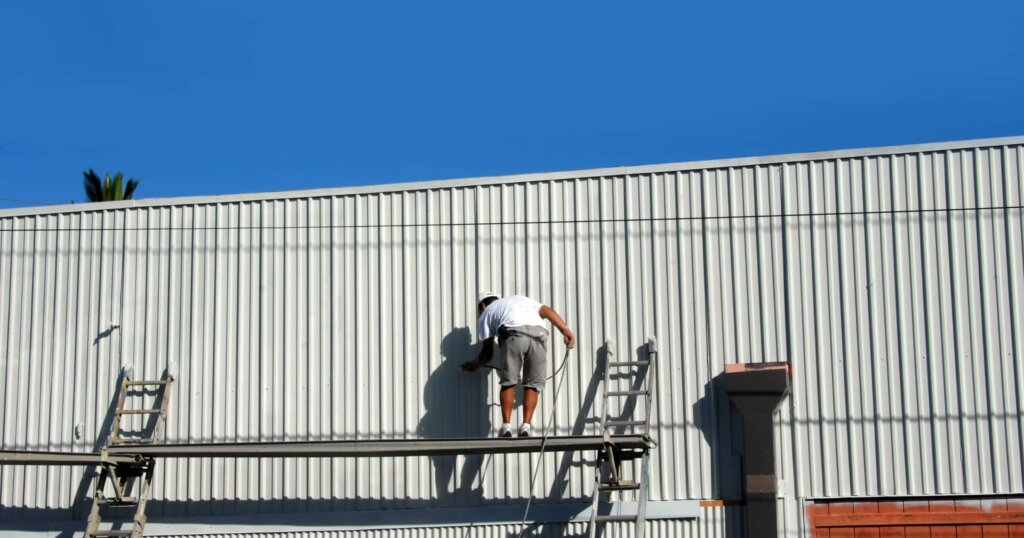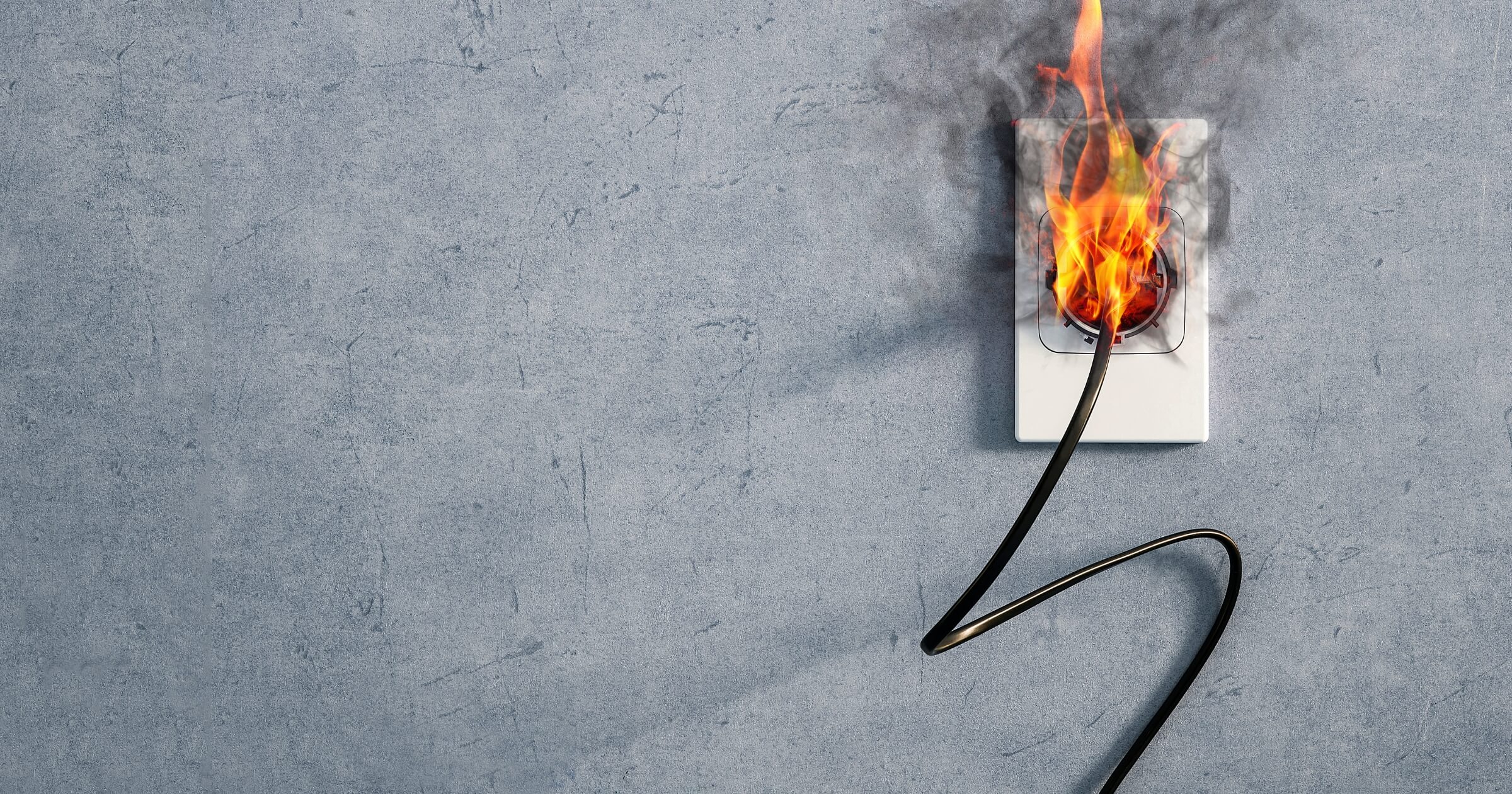Painters often work in environments where electrical hazards are a real danger, from overhead power lines to faulty tools and wet conditions that increase shock risks. Electrocution remains one of the leading causes of workplace fatalities in construction, making proper precautions essential. A solid understanding of electrical risks and the proper safety measures can mean the difference between a routine workday and a life-threatening accident.
Quick look
- Electrical hazards in painting include power lines, faulty tools, wet conditions, and improperly grounded equipment, with 78% of painter electrical fatalities caused by power line contact.
- Safety measures like maintaining a ten-foot distance from power lines, using GFCIs, and working with non-conductive tools reduce the risk of electrocution.
- Training programs help painters recognize electrical hazards, respond to emergencies, and follow safe work practices through regular safety meetings and refresher courses.
- Essential safety gear includes insulated ladders, GFCIs, non-sparking tools, and PPE to prevent electrical injuries.
What are electrical hazards in painting, and why is safety important?

Electrical hazards are a significant concern for painters, leading to risks such as electrocution, burns, falls, and even fires. Notably, 78% of painter workplace electrical fatalities result from contact with overhead power lines. Common electrical hazards that painters may encounter include:
- Contact with overhead power lines: Accidental contact can lead to severe injuries or fatalities.
- Faulty electrical tools and equipment: Using damaged or poorly maintained tools increases the risk of electric shock.
- Inadequate grounding and improper use of extension cords: These issues can lead to electrical faults and potential shocks.
- Lack of Ground-Fault Circuit Interrupters (GFCIs): Without GFCIs, there’s a higher risk of electrocution, especially in wet conditions.
- Wet conditions increase the risk of electric shock: Moisture can conduct electricity, amplifying the danger.
- Poorly insulated ladders conducting electricity: Metal ladders can become live if they contact electrical sources.
- Use of flammable materials near electrical sources: This can lead to fires if ignited by electrical sparks.
- Accidental damage to electrical wiring during prep work: Unintentional cuts or punctures to wiring can expose live wires.
Given that the construction industry consistently records the highest number of electrical fatalities, with painters accounting for a notable portion, it’s imperative to recognize and mitigate these hazards to ensure safety on the job.
10 safety practices for protecting painters from electrical hazards
1. Conduct a site inspection
Start by performing a thorough visual inspection of the work area. Look for indicators such as poles, utility boxes, meters, and manhole covers that suggest the presence of underground utilities. This initial assessment helps identify potential hazards and plan subsequent steps.
2. Mark hazardous areas with proper signage
Once utilities are located, clearly mark their positions on the site using color-coded paint, flags, or stakes. In the United States, the American Public Works Association (APWA) has established uniform color codes for marking different types of utilities:
- Red: Electric power lines, cables, conduit, and lighting cables
- Orange: Telecommunication, alarm, or signal lines, cables, or conduit
- Yellow: Natural gas, oil, steam, petroleum, or other flammable materials
- Green: Sewer and drain lines
- Blue: Potable water
- Purple: Reclaimed water, irrigation, and slurry lines
- Pink: Temporary survey markings, unknown/unidentified facilities
- White: Proposed excavation limits or routes
3. Maintain a safe distance from power lines
Painters should always stay at least ten feet from power lines to prevent accidental contact. Power lines are dangerous and frequent causes of electrical shocks. This distance is crucial for both personal safety and compliance with safety regulations.
4. Use ground-fault circuit interrupters (GFCIs)
Ground-Fault Circuit Interrupters, or GFCIs, are essential devices that protect against electrical shock by quickly shutting off power when a ground fault is detected. For painters, especially those working in environments where electrical tools are used near moisture or conductive materials, utilizing GFCIs is a critical safety measure.
5. Use non-conductive tools and equipment
When working near power lines, using non-conductive tools and equipment is essential. Opt for ladders made from wood or fiberglass instead of metal, as these materials do not conduct electricity. Additionally, tools with insulated handles provide an extra layer of protection against electrical hazards.
6. Avoid overloading circuits and extension cords
Overloading electrical circuits or using damaged extension cords can lead to overheating and increase the risk of electrical fires. To prevent this, ensure that the combined load of all connected devices does not exceed the rated capacity of the circuit or extension cord. Regularly inspect cords for signs of wear or damage and replace them as needed to maintain a safe working environment.
7. Implement proper training programs
Ensuring painters are well-versed in electrical safety prevents accidents and maintains a safe work environment. Here’s how to establish effective training programs:
8. Provide electrical safety training
Equip painters with comprehensive electrical safety training to help them recognize and mitigate potential hazards. This training should cover topics such as the basics of electricity, the safe use of electrical equipment, and the importance of personal protective equipment (PPE).
9. Educate workers on hazard recognition and emergency response
It’s essential that painters can identify electrical hazards and respond appropriately in emergencies. Training should include:
- Hazard recognition: Understanding how to spot potential electrical dangers, such as exposed wires or malfunctioning equipment.
- Emergency response procedures: Knowing the steps to take in case of electrical accidents, including first aid measures and evacuation plans.
10. Conduct regular safety meetings and refresher courses
Regular safety meetings and refresher courses are vital to keep safety protocols fresh in employees’ minds and address any new hazards. These sessions provide opportunities to:
- Reinforce safety protocols: Review existing safety procedures and update them as necessary.
- Discuss incidents and near misses: Analyze recent incidents to prevent future occurrences.
- Introduce new safety measures: Implement new guidelines or equipment to enhance safety.
Essential safety equipment for painters
- Non-sparking tools: When painting near flammable materials or solvents, you need tools that won’t accidentally start a fire. Non-sparking tools are usually made from brass, aluminum bronze, or copper-beryllium alloys. They’re safer than regular steel tools because they don’t produce sparks when you accidentally hit or drop them. Keeping a set of these tools handy reduces fire hazards significantly, making your workspace much safer.
- Ground-fault circuit interrupters (GFCIs): GFCIs are designed to protect you from electrical shocks, which are common hazards for painters working with power tools or spray-painting equipment. These devices immediately cut off electricity if they detect an unusual current, such as water getting into equipment or a tool malfunctioning. Always plug your painting equipment into a GFCI outlet to lower the risk of serious electrical accidents.
- Insulated ladders: Painters often need ladders to reach high or hard-to-access areas. However, regular metal ladders conduct electricity and can cause serious injury if they touch power lines or electrical sources. Insulated ladders made from fiberglass or wood do not conduct electricity. Using one keeps you safe from electrical shocks while you focus on painting tasks above the ground.
- Personal protective equipment (PPE): Wearing proper PPE helps protect you from harmful chemicals, paint fumes, and potential injuries. For painters, PPE usually includes respirators, safety glasses, gloves, rubber soled boots, and coveralls to keep harmful substances away from your skin.
Bottom line
Electrical hazards are a serious risk for painters, but the proper precautions can make all the difference. Keeping a safe distance from power lines, using insulated ladders, and ensuring all tools are GFCI-protected are just a few ways to minimize the dangers of electrocution, burns, and other injuries.
Want more workplace safety tips and industry updates? Subscribe to our newsletter for expert insights, best practices, and the latest painter and construction safety news.


